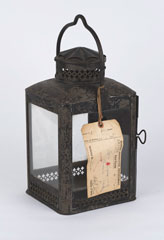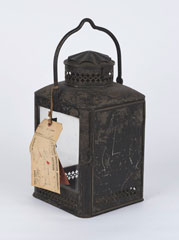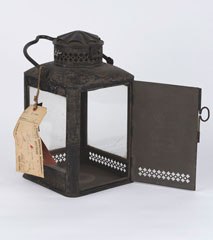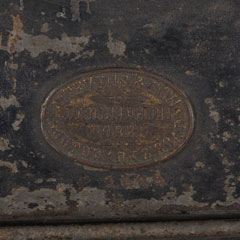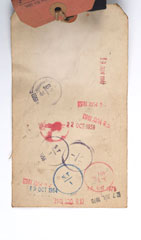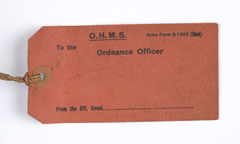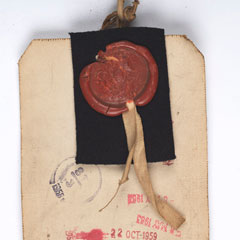
Online Collection
« Prev - 4 of 4 results - Next »
Lamp, magazine, Bermuda Pattern, sealed pattern, 1890 (c)
Made by Stevens and Son, Darlington Works, Southwark Bridge Road, London, resealed 26 February 1930.
A 'sealed pattern' is a prototype of any item that the British Army issued to soldiers. It provided clothing or equipment suppliers with an example to copy.
Lamps like these were used to illuminate passageways and other areas in gunpowder and cordite magazines in fortifications. It used a candle with three wicks. Introduced in 1888 the Bermuda pattern lantern is similar to other magazine lamps of the period but was glazed on three sides instead of two. It was given this name because it was originally designed to cover a special supply of magazine lanterns which were sent for use in the British fortifications which had been built to defend the Naval dockyard at Bermuda.
Despite electricity being introduced into fortifications from the 1890s, much lighting still used candle and oil lanterns. This one was resealed, as a pattern to regulate manufacture, in 1930.
NAM Accession Number
NAM. 1977-01-26-8
Copyright/Ownership
National Army Museum Copyright
Location
National Army Museum, Global Role gallery
Object URL
https://collection.nam.ac.uk/detail.php?acc=1977-01-26-8


